- Obtener enlace
- X
- Correo electrónico
- Otras aplicaciones

Five decades of adrenaline: The rebel photographer who immortalized motorsport
Written by Emiko Jozuka, CNNChiba, Japan
Emiko Jozuka is a Digital Producer for CNN. She is the daughter of the Japanese motorsport photographer Joe Honda.
My father has always lived life in the fast lane. As a student in post-war Japan, he'd skip class to speed around abandoned sites in Tokyo with his biker friends. They'd time their laps to see if any of them had the makings of a pro racer.
Ultimately, he found his calling by capturing the world's fastest vehicles and their human entourages on film. And while I know him as dad, to the rest of the world he is Joe Honda, one of Japan's most celebrated motorsport photographers.
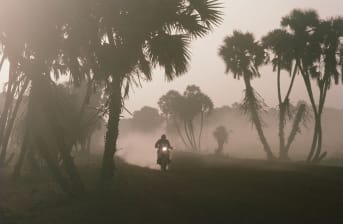
The Paris-Dakar rally was an off-road endurance event that saw motorists on quads, cars, bikes and trucks cross dunes, mud, rocks and camel grass, with some sections seeing them cover up to 800 - 900 kilometers (500 to 560 miles) per day. Credit: Joe Honda
From 1966 to 2011, my father covered everything from the Paris-Dakar Rally to European motocross and NASCAR. He captured the gut-wrenching aftermath of Lorenzo Bandini's fiery -- and ultimately fatal -- crash at the 1967 Monaco Grand Prix, and snapped the likes of Niki Lauda and Ayrton Senna clinching Formula One world championships.
But it wasn't until adulthood that I discovered my 76-year-old father's photography archive. Forty-five years, 300 international races and tens of thousands of digitized images -- key moments of his adventurous life contained on one hard drive.
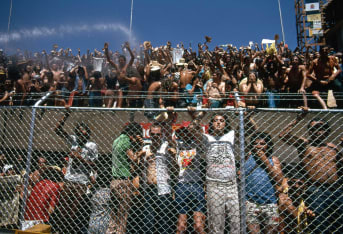
Crowds of excited fans watch the 1973 Brazil Grand Prix -- the first world championship held in the country -- under the blazing sun. Credit: Joe Honda
"Motorsport photography was, by nature, my occupation -- it ran in my blood and was my life," he told me with a grin from a home studio brimming with archival footage that I rarely gave thought to as a child. "I wanted to photograph the people behind the sport."
But back in 1966, when my dad crossed paths with British racing stars Jim Clark, Jackie Stewart and Graham Hill at the Fuji Speedway -- Japan's first professional racetrack -- he never imagined he'd spend the rest of his life on the road.
'Everything felt possible'
Japan's automobile industry was flourishing in the 1960s. The country's fascination with motorcycles was shifting towards cars as Honda Motor Company rolled out new models, and the Nissan Sunny became a low-cost favorite with Japan's middle-class.
The 1964 Olympic Games in Tokyo -- the first to be held in an Asian country -- helped re-establish Japan on the world stage. As a result, it became much easier for Japanese citizens obtain visas and travel abroad.
My dad seized the opportunity.
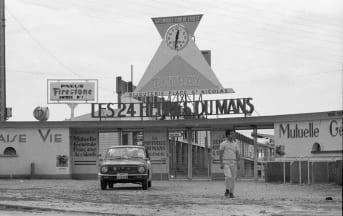
Joe Honda walks beside his Toyota Corolla car -- that he shipped from Japan to Europe -- at the French Grand Prix, 1967. Credit: Joe Honda
When he left Japan to cover the European Grand Prix season in 1967, he knew he was taking the biggest risk of his life. Then aged 27, he traded his Nissan Skyline 2000GT for a cheaper Toyota Corolla (which he later shipped to Europe) in order to raise money for the trip.
My father spoke little English, and had only $500, two analog cameras and a car to his name. But he was set on venturing where no Japanese photographer previously had.
"I didn't have a plan (when I set off to Europe) and I knew that I was being reckless. I sometimes had to choose between buying a roll of film and my next meal," he told me. "It was my youth that somehow kept me from starving. Back then, everything felt possible."
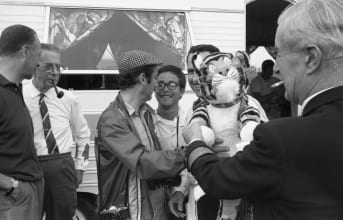
Joe Honda (center) with the President of the International Racing Press Association Bernard Cahier (center left) and Jack Brabham, the winner of the French Grand Prix, 1967.Credit: Joe Honda
'Joe Honda'
My father's real name is Nobuyuki Jozuka, but he chose "Joe Honda" as his work alias. The name has nothing to do with the Japanese car maker, he just thought it sounded catchy and would be easier for foreigners to recall. He always joked that he might easily have opted for Joe Coca-Cola.
Honda was addicted to the sense of adventure and camaraderie on the circuit. His images often portrayed how close the drivers, spectators and the photographers were to one another in the late 1960s and 1970s.
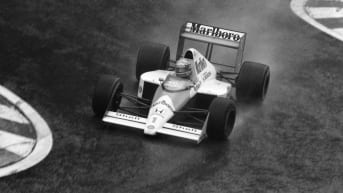
Brazilian F1 racer Ayrton Senna drives for McLaren-Honda at the 1990 British Grand Prix. Credit: Joe Honda
But the motorsport season offers no respite for its most devoted acolytes. My father would find himself camping out with drivers while covering an off-road rally in Senegal one evening, and by the next morning, he'd be in Europe capturing a Grand Prix. Weather conditions were often brutal and he'd snatch food and sleep whenever he could.
"I didn't have any money or connections when I first started," he said, revealing that he used to rely on the kindness of drivers, engineers and other photographers to get by. "I really felt like an unknown lone-wolf photographer who was scavenging for the best shots."
An artist's eye
Like many motorsport photographers of his day, Honda ran more risks than he could now. Lax regulation allowed him to prowl on the fringes of race tracks, with just a few haystacks separating him from the speeding cars.
"At all times, you had to be prepared to leap aside in case a wheel from a racing car suddenly came flying into the spectator stands," Honda said.
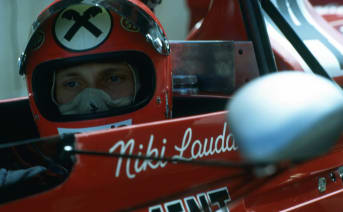
Austrian F1 driver Niki Lauda looks pensive before a race in 1972. Credit: Joe Honda
His archive travels from the grit and glamor of motor racing's golden years to its evolution into a technological arms race funded by big business. But the cars were only ever one part of a larger human narrative.
Taking inspiration from documentary photographers like Henri Cartier-Bresson and Walker Evans -- as well as impressionist painters like Claude Monet -- my father viewed his subjects with an artist's eye. His black-and-white portraiture, shot on 35mm film, reveals the visceral emotion experienced by racing drivers confronting death head on. In his color images, verdant landscapes and spectators frame his shots, blurred as if in a painting.
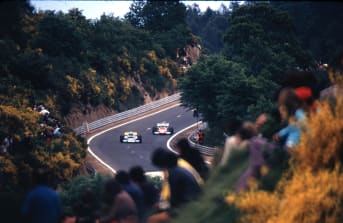
Joe Honda experimented with blur and natural backdrops to create images that reflected his love of Impressionist painting. France, 1972. Credit: Joe Honda
Photographing speeding cars from various vantage points was a challenge. It required immense endurance, concentration and a knack for predicting vehicles' movements. The shots in Honda's archive reflect both these difficulties and his determination to overcome them.
"At the beginning I'd try to keep up with the cars through my camera lens, but I kept making mistakes," Honda said, referring to his earlier shots from European racing circuits.
"I thought it was because I was hungover," he joked. "But it was just because the cars were going so f
- Obtener enlace
- X
- Correo electrónico
- Otras aplicaciones
Comentarios
Publicar un comentario